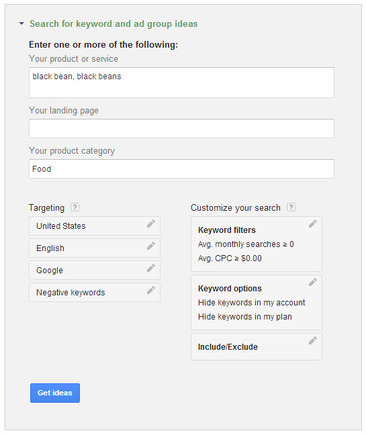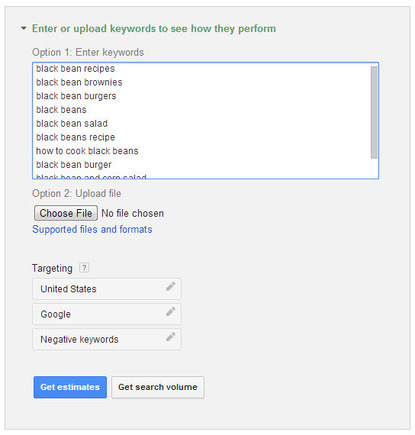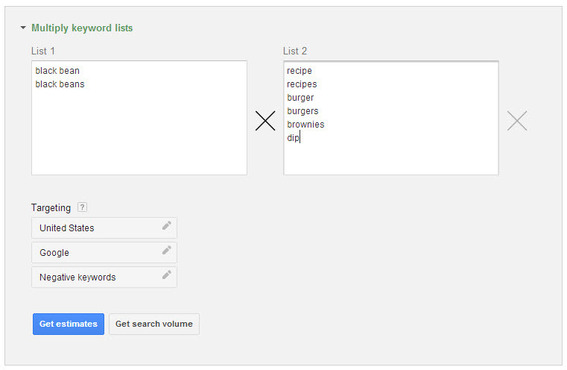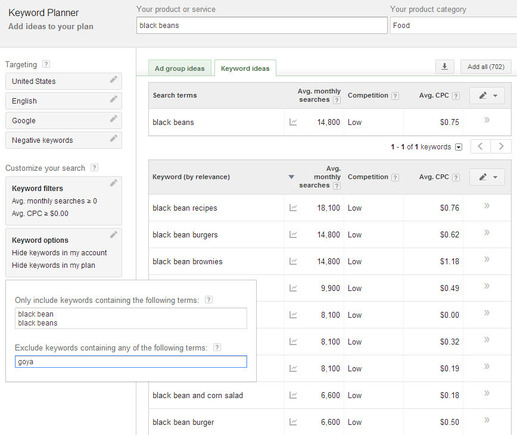Keywords are the foundation of search engine optimization. They’re what searchers type in Google’s search box, and what marketers incorporate into their web pages to attract searchers to their sites. Google recently launched a new tool that changes the way we research keywords: AdWords Keyword Planner.
Intended for use by paid search marketers, the Keyword Planner replaces the AdWords Keyword Tool we’ve often recommended using and merges it with the AdWords Traffic Estimator. In essence, the Keyword Planner is designed to simplify keyword research and campaign planning for paid search marketers.
New Features of the Keyword Planner
Despite its AdWords focus, the Keyword Planner can still be used by SEO professionals. The core of the toolset revolves around keyword volume, a measure central to both paid and organic search.
For those familiar with the Keyword Tool, the new interface will take some getting used to. Where the Keyword Tool offered a single interface to accept keywords and return keyword data, the Keyword Planner gives marketers three choices, as follows.
- Search for keyword and ad group ideas. This option takes by the hand those who don’t know where to start. Enter a keyword or phrase, the URL of a landing page and/or an AdWords category, and the Keyword Planner will return some potentially relevant keywords. Each keyword is accompanied by the average number of times per month for which that exact phrase was searched, the phrase’s competitive score and its average cost per click (CPC). This is the only option available to discover new keywords within AdWords. The other two options report data only for the specific keywords entered without suggesting additional keyword ideas.

Search for keyword and ad group ideas in the Keyword Planner.
- Enter or upload keywords to get estimates. When you know exactly which keywords you’re targeting, this option allows users to paste in or upload a list of keyword phrases. The tool will return the average monthly searches, competitive score, and average CPC for each phrase without identifying additional keyword phrases. Be sure to click “Get search volume” rather than “Get estimates,” or you’ll find yourself in the AdWords interface building ad groups and campaigns instead of downloading data to analyze for SEO.

Enter or upload keywords to get estimates in the Keyword Planner.
- Multiply keyword lists to get estimates. A nice time-saver, this option takes lists of words and combines them in every conceivable way to generate a list of possible keywords. For example, multiplying a list containing “black bean” and “black beans” with a list containing “recipe” and “burger” would result in the following four combined keywords: “black bean recipe,” “black bean burger,” “black beans recipe,” and “black beans burger.” The resulting report also contains the average monthly searches, competitive score, and average CPC for each phrase without identifying additional keyword phrases.

Multiply keyword lists to get estimates in the Keyword Planner.
How It Works for SEO
Essentially, the first option to “search for keyword and ad group ideas” is the closest in functionality to the old Keyword Tool. SEO professionals will use this portion of the Planner most frequently, working with the “Keyword Ideas” tab.

Keyword ideas report in the Keyword Planner.
Play with the interface to determine how to get the most keyword ideas from the tool. I’ve found that entering a few very closely related keyword phrases in the “your product or service” field and leaving the other two fields blank returns the most keyword ideas. To hone in on keywords related to your industry, try adding a product category or using the negative keywords targeting filter to specify keywords you don’t want to include.
It’s not useful to specify a landing page, however, when the goal is to discover new keywords. Adding a landing page tells the tool to extract keyword phrases from content you’ve already created. So basing your SEO plan on those keywords will only get you more of what you already have.
As with the old Keyword Tool, Planner lets you download the monthly search volumes for the last 12 months in addition to the average monthly searches. In the download dialog box, just check the box for “Segment statistics by month.”

Extracting monthly data from the Keyword Planner.
Keyword Planner vs. Keyword Tool
The “search for keyword and ad group ideas” portion of the Keyword Planner offers recipes more efficiently than the old Keyword Tool. For instance, the keyword and ad group ideas report can be modified quickly via an interface that doesn’t require the entire page to load. The content refreshes quickly to include or exclude certain words, apply keyword filters, adjust targeting, modify the search and more.
SEO professionals will also be glad to see that exact match is the default measure for average searches per month. Exact match refers to searchers using an exact keyword phrase without being split by other intervening words. For example, only “bean recipes” is an exact match for the keyword phrase “bean recipes.” Phrase match and broad match would match keywords that searchers use more loosely, such as phrase matching a search for “bean and ham recipes” with the keyword “bean recipes.”
The old Keyword Tool defaulted to broad match for search volumes, a number that results in dramatically skewed keyword data for organic search. One missed check box in the old tool could render hours of keyword research useless if was conducted in the wrong match type.
Another good feature the new Keyword Planner brings to the table for local search is targeting by city. For ecommerce sites with brick and mortar stores in specific cities or regions within a country, this new feature is revolutionary. The old Keyword Tool displayed search volumes by country only.
Unfortunately, using the “search for keyword and ad group ideas” portion of the Keyword Planner makes keyword discovery an even more time-consuming process than it already is by adding extra steps. Before you can even begin to research keywords, you have to choose which of the three features you’d like to work with. In addition, after clicking the “Download” button, a second confirmation dialog box must be clicked through before the file will be downloaded to your hard drive.
Really, though, it doesn’t matter which we prefer, the old Keyword Tool or the new Keyword Planner. The Planner was launched in mid-May, and the AdWords Keyword Tool should be discontinued sometime this month. Since the Keyword Planner is here to stay, get used to the interface before the Keyword Tool disappears and you’re left scrambling for data.


